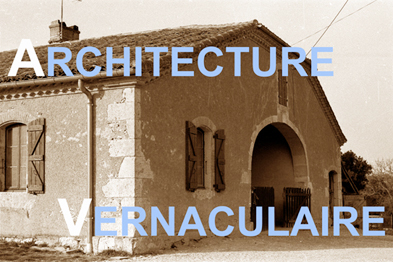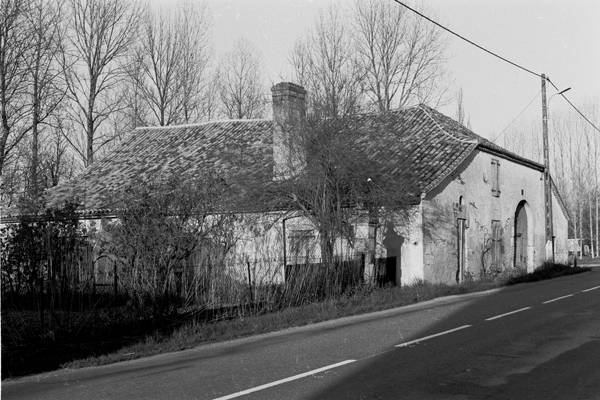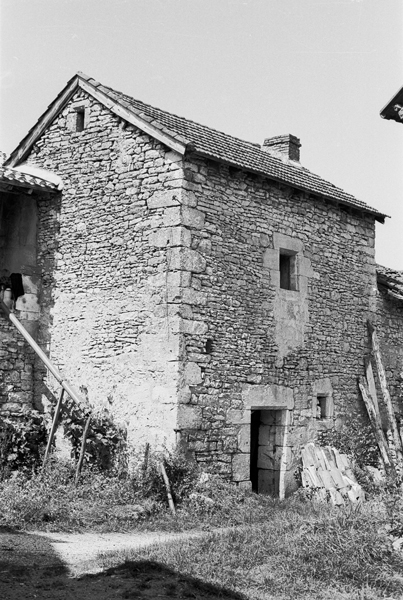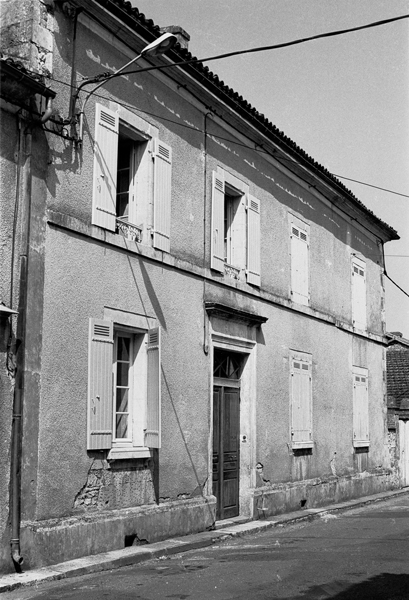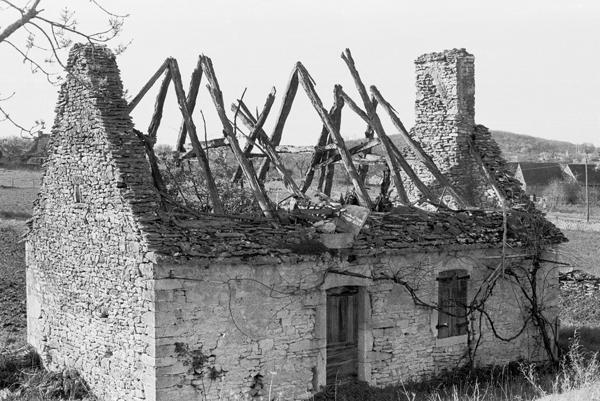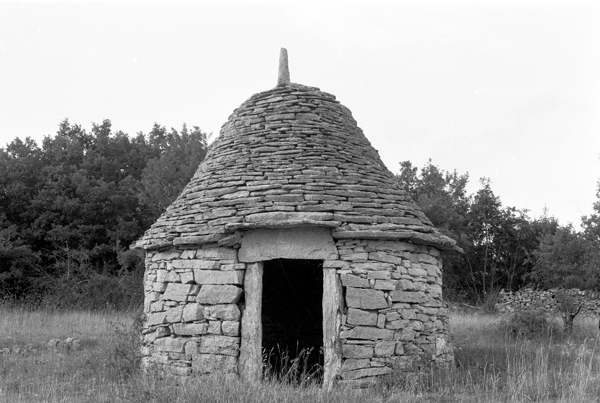THE VERNACULAR ARCHITECTURE OF PÉRIGORD AND HIGHER QUERCY IN THE 19th CENTURY Christian Lassure PÉRIGORD Stretching from Limousin to Aquitaine, the former province of Périgord corresponds to the present département of Dordogne. None of its various geographical regions boasts any single rural house-type, as the same plan-forms occur from one region to another; only building materials and external appearances differ. Walling materials are granite in the Nontron region, soft limestone in the Ribérac region and central Périgord, sandstone and schist in the north-eastern part of the département, half-timber in the Double and the Landais regions, etc. Roofing materials are slates in the eastern part of the département, stone tiles in the Sarlat region, half-round tiles in Périgord Blanc, etc. All the same, these are only the most commonly used materials among other existing materials: for example, the nibbed flat tile, too, is not uncommon in the latter three regions. Likewise, in the Double and the Landais regions, building stone was once imported from neighbouring areas. The majority of rural houses visible in Périgord were built or rebuilt between 1750 and 1900. Their plan-forms mirror the socio-economic fabric of the rural population as well as its evolution over this period. At the bottom of the scale, we find the landless peasant's “borderie”, or cottage, a one-cell single-storeyed rectangular house, standing isolated on a small holding rented from the owner of a big estate in return for a few days' work. It has no outbuilding, as the "bordier", or cottager, cultivates his patch with the landlord's implements and teams of draught animals. The next level is occupied by the "métairie" of the sharecropper who cultivates a 5-to-10 hectare landholding, i.e. a "longère", or lengthwise house, consisting of a dwelling room with added byre or barn-and-byre under a single roof. All the openings are set into one and the same long wall and there is no connecting passageway. More rarely, in the south-western part of the département, the "métairie" follows another plan-type, that of the house with nave and aisles, with its openings in the gable wall, under a recessed porch. The nave houses a threshing floor, a barn, a wine-cellar; the aisles provide accommodation for men and animals.
At the level immediately above, we find the house of the small farmer or vine-grower, namely the first-floor house or upper-floor hall in which a functional ground-floor is topped by living quarters. Access to the first-floor is gained by an external stone staircase and landing, sometimes under overhanging roof eaves supported by posts or pillar (the bolet). The ground floor is used as a store, or a wine cellar, or less frequently a sheep shelter. The craftsmen and tradesmen of villages and market towns also inhabit this type of house, but then the ground floor level is occupied by a workshop or a small shop. With outbuildings added (barn-and-byre, bake house, pigstie, etc.), the house forms three, if not four, sides of a courtyard.
Frequently met with in Périgord Noir, the upper-floor hall is also to be found in other regions of Périgord, in particular in vine-growing areas. The big landowner's house (the "maison de maître") belongs, in its plan and form, to urban architecture, being a house with symmetrical façade and central-entry plan, generally of two or three storeys. Unless it is directly managed by its owner, the estate is leased out to a tenant farmer, hence the proximity of agricultural buildings and lodgings for the tenant.
HIGHER QUERCY Ranging, like Périgord, from the Massif Central to Aquitaine, Quercy traditionally comprizes higher Quercy (centred on Cahors) and lower Quercy (centred on Montauban). Only higher Quercy, i.e. the present-day département of Lot, will be dealt with here. According to the geological area, one notices the predominance of one particular building or roofing material or another (limestone walling on the Causses, schist flags and granite blocks in the Châtaigneraie, etc.; coverings of stone tiles on the Causses, of nibbed flat tiles to the North of the river Lot, of half-round tiles to the South of the river Lot, of slates to the North of the river Dordogne, etc.), of one type of roof slope or another (steep pitch to the North of the river Lot, low pitch in the southern part of the département, Mansard roof in Limargue), but with no exclusiveness whatsoever. The date-inscriptions recorded on buildings range from the early 18th century up till World War I, with a peak between 1840 and 1890.
As in Périgord, the landless peasant (the brassié), who hires out his labour for a living, inhabits a single rectangular room, while the day-labourer with a small holding, the sharecropper (of less common occurrence than in Périgord) and the small landowner all live in a "longère", or lengthwise house, combining a dwelling room and agricultural dependencies laid out in a line or in a right-angle form. Lastly, the average peasant (the pagès) who owns his holding and implements, but above all the small vine-grower, both inhabit a first-floor hall. The hall contains a wide fireplace with keeping-places and a grate (the potager) for cooking on hot cinders. The seats on either side of the fireplace make up the cantou, or inglenook. In one of the long walls, a vaulted recess (the "souillarde"), forming an outshot on the outside, houses a stone sink and stone ledges to hold pots.
A typical feature of the vine-grower's upper-floor house is its tower-like dovecote flanking one end of a sometimes monumentally-proportioned gallery. Its inmates provide a highly-prized fertilizer, colombine. The upper-floor house is common everywhere, except for the limestone plateaux to the North of the river Dordogne where it rarely occurs, but with variations in its outside appearance (presence or absence of a tower-like dovecote, wooden posts or stone pillars supporting the verandah, etc.). It is widespread across the area of the former Cahors vineyard region. This particular type of house has been singled out as THE Quercy house but such an assertion is contradicted by statistics. In 1862, the Annuaire du Lot (Lot Census) specifies that, out of an inventory of 70,186 rural houses, 31,862 have both a ground floor and an upper floor as against 34,447 with only a ground floor. One type of vernacular architecture commonly found across the Périgord and Quercy limestone plateaux consists of the dry-stone huts called chabanos in the Dordogne département, cabanos and casèlos in the Lot département, mostly land clearers' cabins (gariotos), vineyard toolsheds, sheep shelters, hen houses (galinièros), etc., but also, in some cases, dwellings for beggars or temporary habitations prior to erecting a permanent house.
BIBLIOGRAPHY CAYLA Alfred, 1979, Habitat et vie paysanne en Quercy (Paris: Garnier Frères) FENELON Paul, 1969, 'La maison rurale périgourdine', in Norois, vol. 16 LASSURE Christian (ed.), 1986, Architectures, techniques et arts populaires en Périgord (Paris: CERAV) SIMON Jean-Paul, 1991, L'architecture paysanne en Périgord et sa restauration; introduction de Denis Soulié (Périgueux: Pierre Fanlac) © CERAV To be referred to as: Christian Lassure |
